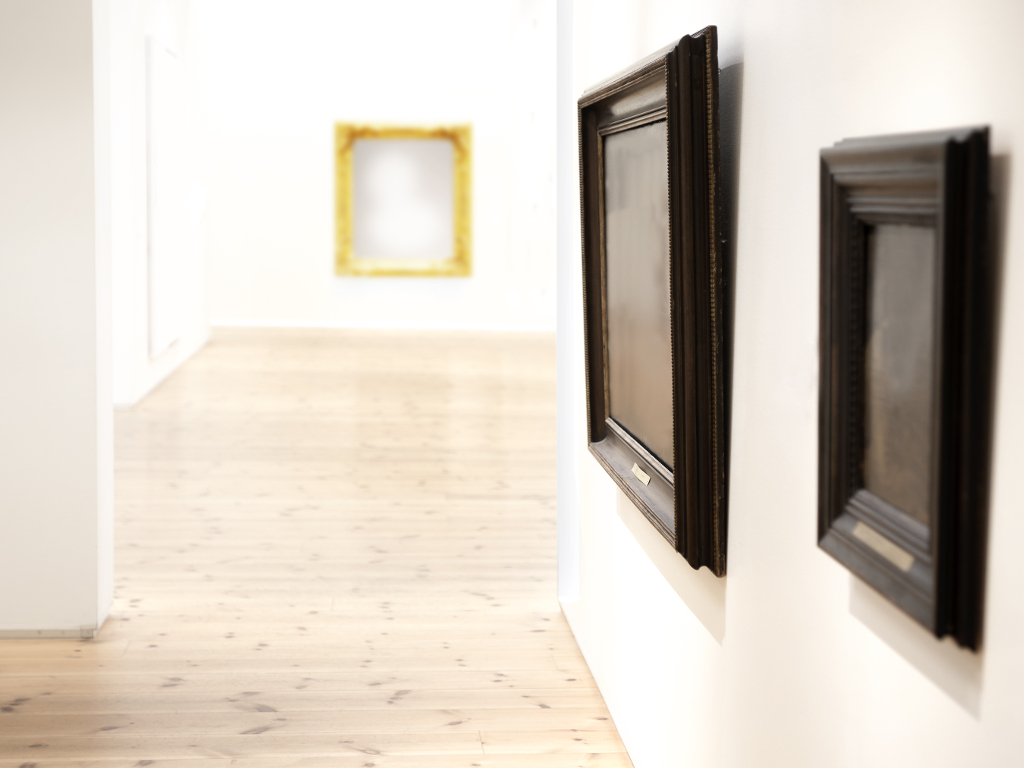Private museums between enthusiasm and finance – Global cultural tourism market on the rise, only 5 such institutions registered in Serbia
In Serbia, museums are seen as an expenditure, many are not operational, or are in some stage of a reconstruction. This year's Night of the Museums was a good occasion to reactivate the topic and to visit the museums, but the public's interest seems to wane once the event passes.
The situations is, however, slowly changing, as museums are getting closer to the world of business. Collectors and private businessmen are saving collections of precious items gathering dust in attics and basements. Parallel to this, cultural tourism, on which nearly all European capitals lean on, is developing, and the World Tourism Organization estimates that the cultural tourism market will be one of the five leading markets by 2020.
In addition to state-owned museums, according to unofficial information, there are around 90 private museums in Serbia as well – from those featuring highly valuable artworks, to the specialized ones – museums of bread, matches, beer... According to the Ministry of Culture, however, only five are officially registered.
– The first private museum to be registered is the Auto Museum of Bratislav Petkovic – the Ministry of Culture says for eKapija. The next ones to register were the Roma Museum Belgrade, the Zepter Museum Belgrade, The National Theater Museum Belgrade and the Auto Museum Simanovci.
The procedure of founding a museum is easy and publicly available, the Ministry claims, but no other private museum has addressed them.
– We are paying special attention to initiatives related to the foundation of cultural institutions, especially those dedicated to prominent names of Serbian culture and art. Therefore, each idea or project adequately presenting the domestic arts has our support – the Ministry of Culture emphasizes.
The foundation of museums or institutes for preservation of artworks and historical items is regulated by the Law on Cultural Heritage, the Law on Culture and the regulations on conditions for performing the activities of cultural heritage preservation.
In order for a museum to start operating, it needs to meet safety requirements (protection from theft, fire, humidity) and to feature a microclimate regime of keeping artworks. A museum should also feature room for documents and a library, as well as for performing conservation and restoration activities.
A museum, according to the regulations, must employ four people with higher education – two curators, a document-keeping curator and an educational curator. Museums with smaller catalogs of artworks and historical items are an exception and are allowed to employ only one person with higher education.
The Ministry of Culture says that the only way for private museums to receive financial aids is through financing contests and co-financing cultural heritage projects in Serbia, which encompass the field of museums. Contests are available to institutions and other legal entities registered for cultural heritage preservation as the core activity, and this year's funds set aside for the purpose amounted to RSD 51.5 million.
When asked why cultural tourism is not more present locally, they explain that a greater synergy is needed between tourist workers, museums, local self-governments and other relevant factors.
(The House of Jevrem Grujic) Enthusiasm as the driving engine
Among the most famous private museums not on the ministry's list are the Macura Museum Novi Banovci, the House of Jevrem Grujic, The Jeremija Bread Museum...
Lazar Secerovic, a co-founder of the House of Jevrem Frujic, says that they are under the jurisdiction of Belgrade, but that not even the fact that the house was put under the protection of the Belgrade City Institute for the Protection of Cultural Monuments in the 1960s can help them benefit from any kind of considerable state aid. Secerovic cites as the main reason for the museum's not being among the top five officially registered private museums the fact that they don't have the capacity to permanently employ four people, which is one of the conditions for the registration. He believes that the opportunity for such institutions lies in public-private partnerships.
The House of Jevrem Grujic, located in the very center of Belgrade, next to Atelje 212, has had an enormous number of visitors since its foundation, and Lazar Secerovic is happy that the majority of them are young people.
– For 12 years now, we've been taking part in the European Heritage Days. Two years ago, we decided to set up a permanent exhibition and open it to the public, but this is now a unique cultural center, which organizes book promotions, theatrical plays, events... The city only helped us with the foundation, but their help is nowhere to be found now. We have failed to receive funds at five contests this year, and we only managed to get the money for an exhibit from the Ministry of Culture – Secerovic says for eKapija and adds that RSD 400,000 a year is sufficient for the museum to operate properly.
They also cooperate with state museums, our interviewee says and explains that they often lend items to each other and that the National Museum is the only one they don't cooperate with.
The region ahead of Serbia
The situation with private museums in the neighboring Croatia is much better, as confirmed by the numbers – private museums in this country earn HRK 2.4 million (around RSD 39 million) from tickets alone. One of the biggest attractions in the capital of Croatia is the Museum of Illusions, which is a priority for nearly all tourists coming to Zagreb. The Museum of Illusions is a unique attraction interesting to people of all ages. Among other things, visitors can experience the Anti-gravity Room, get lost in the mirrors of the Infinity Room or take a walk down the ceiling of the Rotated Room... Following Zagreb, the museum opened in Ljubljana as well, and, as eKapija learns exclusively, it will soon be opened in Belgrade too.
(The Museum of Illusions in Zagreb) The founder of the Museum of Illusions, Roko Zivkovic, says that the idea about the initial foundation of such a museum in Zagreb was the result of considering what and how to offer to the capital of Zagreb and its guests.
– Until recently, the development of tourism and culture were relatively independent of each other. The number of cultural tourists was small, and the tourist consumption of cultural features is sporadic, so the main purpose of cultural institutions was in fact to satisfy the needs of the local population. Furthermore, cultural institutions strove for an elitist image, considering visitors and unwanted distraction from their main task, which is to preserve or create cultural items. By contrast, museums and cultural institutes now have their doors wide open to visitors, competing with the rest of the free time industry offer. The Museum of Illusions is the leader in this kind of approach with its daily marketing activities – Zivkovic explains.
Additional sources of income
Culture receives an additional source of income from tourism, the markets expand and new segments of visitors are created, professional management of cultural heritage and the marketing thereof is stimulated, better control of the usage of cultural potentials is enabled, and a better cultural image is created among the local populace, our interviewee claims.
Zivkovic believes that, to succeed, one needs a good concept above all, the kind that guarantees a big number of visitors, great marketing, as well as numerous foreign tourists the destination needs to have.
– In addition to that, an additional source of income is necessary, enabling the museum to operate. We've found it in the distribution of didactic toys, which we are exclusive representatives of in Croatia, Slovenia, Montenegro, Serbia, Macedonia, Albania and Kosovo. Additional sources of income are also children's birthdays, events and sponsorship within the museum, which must be a part of the offer – explains the founder of the Museum of Illusions.
The museum has also created its own franchise concept and patented it in over 20 countries.
Global practice
In Europe, there are nearly as many private museums as there are state-owned ones. For example, in Finland, around 40% of the museums are privately owned, in Ireland, the percentage is 30%, in Italy, 1,040 of the 3,500 museums are privately owned, whereas, in Germany, there are around 3,000 state museums and 2,000 private ones. A special highlight is the Eifel region with its 40 privately owned museums.
Aside from individual collecting, which has a long tradition in Europe, there are also the collections of the leading global corporations. Among the most renowned corporate collections are those of Deutsche Bank, the largest art collection in the world, with over 50,000 artworks, and Microsoft's art collection, with over 4,500 works of contemporary art.
Sanja Sojic
The situations is, however, slowly changing, as museums are getting closer to the world of business. Collectors and private businessmen are saving collections of precious items gathering dust in attics and basements. Parallel to this, cultural tourism, on which nearly all European capitals lean on, is developing, and the World Tourism Organization estimates that the cultural tourism market will be one of the five leading markets by 2020.
In addition to state-owned museums, according to unofficial information, there are around 90 private museums in Serbia as well – from those featuring highly valuable artworks, to the specialized ones – museums of bread, matches, beer... According to the Ministry of Culture, however, only five are officially registered.
– The first private museum to be registered is the Auto Museum of Bratislav Petkovic – the Ministry of Culture says for eKapija. The next ones to register were the Roma Museum Belgrade, the Zepter Museum Belgrade, The National Theater Museum Belgrade and the Auto Museum Simanovci.
The procedure of founding a museum is easy and publicly available, the Ministry claims, but no other private museum has addressed them.
– We are paying special attention to initiatives related to the foundation of cultural institutions, especially those dedicated to prominent names of Serbian culture and art. Therefore, each idea or project adequately presenting the domestic arts has our support – the Ministry of Culture emphasizes.
The foundation of museums or institutes for preservation of artworks and historical items is regulated by the Law on Cultural Heritage, the Law on Culture and the regulations on conditions for performing the activities of cultural heritage preservation.
In order for a museum to start operating, it needs to meet safety requirements (protection from theft, fire, humidity) and to feature a microclimate regime of keeping artworks. A museum should also feature room for documents and a library, as well as for performing conservation and restoration activities.
A museum, according to the regulations, must employ four people with higher education – two curators, a document-keeping curator and an educational curator. Museums with smaller catalogs of artworks and historical items are an exception and are allowed to employ only one person with higher education.
The Ministry of Culture says that the only way for private museums to receive financial aids is through financing contests and co-financing cultural heritage projects in Serbia, which encompass the field of museums. Contests are available to institutions and other legal entities registered for cultural heritage preservation as the core activity, and this year's funds set aside for the purpose amounted to RSD 51.5 million.
When asked why cultural tourism is not more present locally, they explain that a greater synergy is needed between tourist workers, museums, local self-governments and other relevant factors.
(The House of Jevrem Grujic) Enthusiasm as the driving engine
Among the most famous private museums not on the ministry's list are the Macura Museum Novi Banovci, the House of Jevrem Grujic, The Jeremija Bread Museum...
Lazar Secerovic, a co-founder of the House of Jevrem Frujic, says that they are under the jurisdiction of Belgrade, but that not even the fact that the house was put under the protection of the Belgrade City Institute for the Protection of Cultural Monuments in the 1960s can help them benefit from any kind of considerable state aid. Secerovic cites as the main reason for the museum's not being among the top five officially registered private museums the fact that they don't have the capacity to permanently employ four people, which is one of the conditions for the registration. He believes that the opportunity for such institutions lies in public-private partnerships.
The House of Jevrem Grujic, located in the very center of Belgrade, next to Atelje 212, has had an enormous number of visitors since its foundation, and Lazar Secerovic is happy that the majority of them are young people.
– For 12 years now, we've been taking part in the European Heritage Days. Two years ago, we decided to set up a permanent exhibition and open it to the public, but this is now a unique cultural center, which organizes book promotions, theatrical plays, events... The city only helped us with the foundation, but their help is nowhere to be found now. We have failed to receive funds at five contests this year, and we only managed to get the money for an exhibit from the Ministry of Culture – Secerovic says for eKapija and adds that RSD 400,000 a year is sufficient for the museum to operate properly.
They also cooperate with state museums, our interviewee says and explains that they often lend items to each other and that the National Museum is the only one they don't cooperate with.
The region ahead of Serbia
The situation with private museums in the neighboring Croatia is much better, as confirmed by the numbers – private museums in this country earn HRK 2.4 million (around RSD 39 million) from tickets alone. One of the biggest attractions in the capital of Croatia is the Museum of Illusions, which is a priority for nearly all tourists coming to Zagreb. The Museum of Illusions is a unique attraction interesting to people of all ages. Among other things, visitors can experience the Anti-gravity Room, get lost in the mirrors of the Infinity Room or take a walk down the ceiling of the Rotated Room... Following Zagreb, the museum opened in Ljubljana as well, and, as eKapija learns exclusively, it will soon be opened in Belgrade too.
(The Museum of Illusions in Zagreb) The founder of the Museum of Illusions, Roko Zivkovic, says that the idea about the initial foundation of such a museum in Zagreb was the result of considering what and how to offer to the capital of Zagreb and its guests.
– Until recently, the development of tourism and culture were relatively independent of each other. The number of cultural tourists was small, and the tourist consumption of cultural features is sporadic, so the main purpose of cultural institutions was in fact to satisfy the needs of the local population. Furthermore, cultural institutions strove for an elitist image, considering visitors and unwanted distraction from their main task, which is to preserve or create cultural items. By contrast, museums and cultural institutes now have their doors wide open to visitors, competing with the rest of the free time industry offer. The Museum of Illusions is the leader in this kind of approach with its daily marketing activities – Zivkovic explains.
Additional sources of income
Culture receives an additional source of income from tourism, the markets expand and new segments of visitors are created, professional management of cultural heritage and the marketing thereof is stimulated, better control of the usage of cultural potentials is enabled, and a better cultural image is created among the local populace, our interviewee claims.
Zivkovic believes that, to succeed, one needs a good concept above all, the kind that guarantees a big number of visitors, great marketing, as well as numerous foreign tourists the destination needs to have.
– In addition to that, an additional source of income is necessary, enabling the museum to operate. We've found it in the distribution of didactic toys, which we are exclusive representatives of in Croatia, Slovenia, Montenegro, Serbia, Macedonia, Albania and Kosovo. Additional sources of income are also children's birthdays, events and sponsorship within the museum, which must be a part of the offer – explains the founder of the Museum of Illusions.
The museum has also created its own franchise concept and patented it in over 20 countries.
Global practice
In Europe, there are nearly as many private museums as there are state-owned ones. For example, in Finland, around 40% of the museums are privately owned, in Ireland, the percentage is 30%, in Italy, 1,040 of the 3,500 museums are privately owned, whereas, in Germany, there are around 3,000 state museums and 2,000 private ones. A special highlight is the Eifel region with its 40 privately owned museums.
Aside from individual collecting, which has a long tradition in Europe, there are also the collections of the leading global corporations. Among the most renowned corporate collections are those of Deutsche Bank, the largest art collection in the world, with over 50,000 artworks, and Microsoft's art collection, with over 4,500 works of contemporary art.
Sanja Sojic
Companies:
Ministarstvo kulture Republike Srbije
Centralni institut za konzervaciju Beograd
Muzej automobila Moderna Garaža Beograd
Muzej Zepter Beograd
Narodno pozorište u Beogradu
Dom Jevrema Grujića Beograd
Zavod za zaštitu spomenika kulture Grada Beograda
Muzej Macura
Muzej hleba Jeremija
Muzej Iluzija Zagreb
Tags:
Share:






Only logged-in users can comment.


 Izdanje Srbija
Izdanje Srbija Serbische Ausgabe
Serbische Ausgabe Izdanje BiH
Izdanje BiH Izdanje Crna Gora
Izdanje Crna Gora


 News
News









 LinkedIn
LinkedIn Copy link
Copy link


